第4章
Animals which, like men and birds, have the superior part distinguished from the front are two-footed (biped).In them, of the four points of motion, two are wings in the one, hands and arms in the other.Animals which have the superior and the front parts identically situated are four-footed, many-footed, or footless (quadruped, polypod, limbless).I use the term foot for a member employed for movement in place connected with a point on the ground, for the feet appear to have got their name from the ground under our feet.
Some animals, too, have the front and back parts identically situated, for example, Cephalopods (molluscs) and spiral-shaped Testaceans, and these we have discussed elsewhere in another connexion.
Now there is in place a superior, an intermediate, and an inferior; in respect to place bipeds have their superior part corresponding to the part of the universe; quadrupeds, polypods, and footless animals to the intermediate part, and plants to the inferior.
The reason is that these have no power of locomotion, and the superior part is determined relatively to the nutriment, and their nutriment is from the earth.Quadrupeds, polypods, and footless animals again have their superior part corresponding to the intermediate, because they are not erect.Bipeds have theirs corresponding to the superior part of the universe because they are erect, and of bipeds, man par excellence; for man is the most natural of bipeds.And it is reasonable for the starting points to be in these parts; for the starting-point is honourable, and the superior is more honourable than the inferior, the front than the back, and the right than the left.Or we may reverse the argument and say quite well that these parts are more honourable than their opposites just because the starting-points are in them.